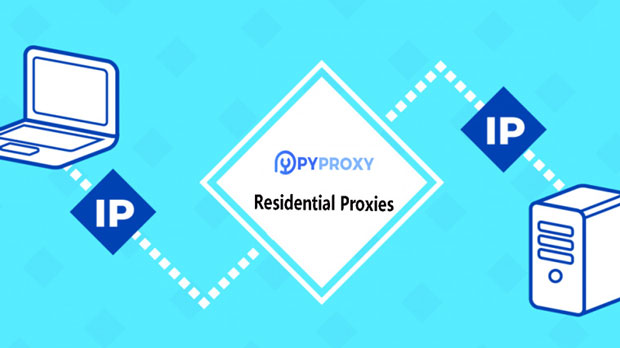What are the security risks of using the free proxy server list SOCKS5?
When users choose to access the internet through proxy servers, many opt for free services, particularly those offering socks5 proxies. While SOCKS5 proxies promise increased privacy and security by routing traffic through intermediary servers, they also present various security risks. These risks arise primarily from the lack of control and oversight associated with free proxies, which often expose users to threats like data interception, malware attacks, and privacy violations. This article will explore the potential security hazards of using free socks5 proxy servers and why users should be cautious when relying on these services. Understanding SOCKS5 ProxiesSOCKS5 (Socket Secure version 5) is a protocol used for routing internet traffic through an intermediary server, offering a higher degree of flexibility and anonymity compared to other proxy protocols. SOCKS5 can handle a wide range of traffic types, including HTTP, HTTPS, FTP, and others, without modifying the data being transferred. This makes it a versatile choice for users seeking to mask their IP addresses and improve their online privacy.However, while SOCKS5 proxies are beneficial for enhancing privacy, they are not foolproof, especially when users opt for free services. Free SOCKS5 proxies come with several security vulnerabilities that are often overlooked by users.1. Data Interception and Man-in-the-Middle AttacksOne of the most significant risks of using free socks5 proxy servers is the potential for data interception. When you use a proxy server, your internet traffic passes through a third-party server, which can monitor and log your activity. If the proxy server is operated by an untrustworthy entity, there is a risk that your sensitive information, such as login credentials, banking details, and browsing history, can be intercepted and misused.Free proxy services, in particular, are often not encrypted, making them vulnerable to man-in-the-middle (MITM) attacks. In these attacks, a malicious actor can intercept communications between the user and the proxy server, potentially capturing sensitive data. This is a severe privacy concern, especially when using the internet for online banking, shopping, or accessing sensitive accounts.2. Malware and Phishing ThreatsFree SOCKS5 proxies often lack robust security measures and are sometimes used as a vehicle for spreading malware. These proxies may inject malicious code into the data stream, exposing users to viruses, ransomware, or spyware. Additionally, some free proxy servers are set up with the sole intention of harvesting user data through phishing attempts.Phishing is a common tactic where attackers impersonate legitimate services or websites to trick users into revealing personal information, such as usernames, passwords, and credit card details. Since free proxies are rarely subject to scrutiny or regulation, they can easily be exploited to carry out phishing schemes.3. Unreliable Privacy ProtectionWhile SOCKS5 proxies are marketed as tools for enhancing privacy, free SOCKS5 proxies do not always offer the level of protection they claim. Many free proxy servers log user data and may share or sell this information to third parties, thus compromising privacy. This logging behavior is often buried in the terms and conditions of free proxy services, which are rarely read by users.Free proxy providers may also keep records of user IP addresses, browsing habits, and even the websites visited. This kind of data collection can undermine the very privacy that users seek when utilizing a proxy server. Some free SOCKS5 proxies are even known to monitor user traffic for advertising purposes, further infringing on users' privacy.4. Legal and Ethical ConcernsThe use of free SOCKS5 proxies may also expose users to legal and ethical risks. Many free proxies are located in countries with weak or unclear data protection laws, which can lead to data being mishandled or misused. In some cases, free proxy servers may be involved in illegal activities, such as facilitating access to pirated content or conducting cyberattacks.By using these services, users may unknowingly become part of illegal activities or violate laws and regulations related to online content, data protection, or cybercrime. This can lead to severe consequences, including fines, legal actions, or being blacklisted by certain websites or services.5. Poor Performance and Service DowntimeSecurity isn't the only concern when using free SOCKS5 proxies; performance is also a major issue. Free proxy servers are typically overburdened with traffic, leading to slow speeds and frequent downtimes. This poor performance not only frustrates users but can also increase vulnerability to security breaches. When users experience slow speeds, they may be tempted to access insecure websites or share sensitive information, believing that the performance issues are not related to the security risks posed by the proxy.Additionally, free SOCKS5 proxies are often unreliable, meaning they can go offline without notice, leaving users exposed to the internet without the protection they expect. Such interruptions can leave users vulnerable to attacks or other security breaches.6. Lack of Support and Transparency free socks5 proxy services typically offer little to no customer support, and the operators behind these proxies are rarely transparent about their practices. This lack of accountability can make it difficult for users to resolve issues or to know who is responsible for their security.Conclusion: Why Caution is CrucialWhile free SOCKS5 proxies might seem like an attractive option for enhancing online privacy, they come with significant security risks. Data interception, malware, unreliable privacy protection, legal concerns, poor performance, and the lack of customer support all contribute to the potential dangers of relying on free proxies.For users who prioritize security and privacy, it's important to carefully evaluate the risks associated with free SOCKS5 proxies. Opting for more secure, paid alternatives that offer encryption, better privacy policies, and reliable customer support can go a long way in safeguarding personal data and online activities.Final ThoughtsUsing free SOCKS5 proxies may offer temporary anonymity, but the risks far outweigh the benefits in many cases. The security hazards, such as data interception, malware infections, and privacy violations, make it imperative for users to exercise caution. In an increasingly connected world, ensuring the safety of personal information should always be a priority, and selecting a trusted proxy service is an essential step in maintaining online security.
2025-01-07

























































